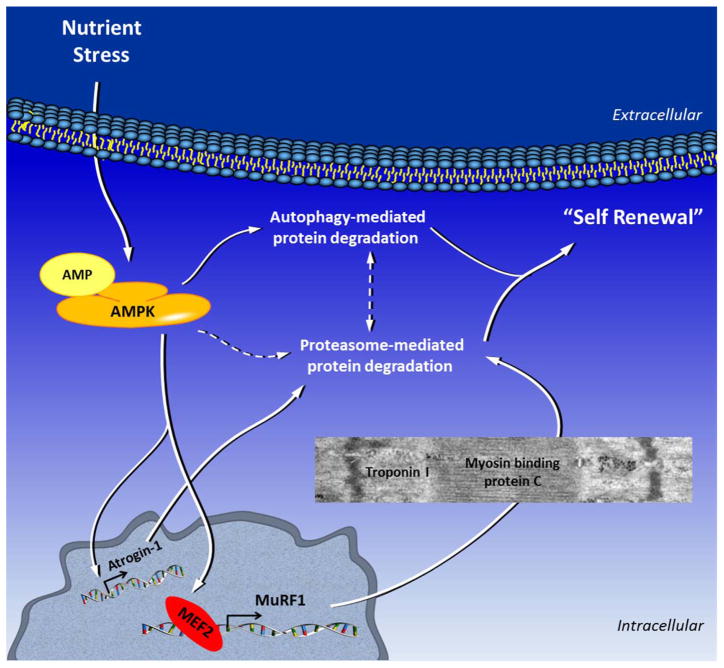Figure 1.
Nutrient deprivation or other forms of environmental stress result in increased intracellular AMP levels and activation of AMPK. AMPK increases protein degradation via several different mechanisms, including autophagy and proteasome-mediated protein degradation by upregulating ubiquitin ligases. Specifically, AMPK regulates MuRF1 expression through the transcription factor MEF2, and regulates Atrogin-1 expression through an as yet unknown mechanism. During starvation, MuRF1 degrades myosin binding protein C and troponin I, which may contribute to decreased cardiac function. MuRF1 also degrades metabolic enzymes like aldolase a and pyruvate dehydrogenase (not shown in the figure). Hence, protein degradation is a mediator of cardiomyocyte remodeling, particularly during metabolic stress in the cardiomyocyte. See text for details. Dashed lines refer to possible crosstalk or as yet unknown mechanisms.

